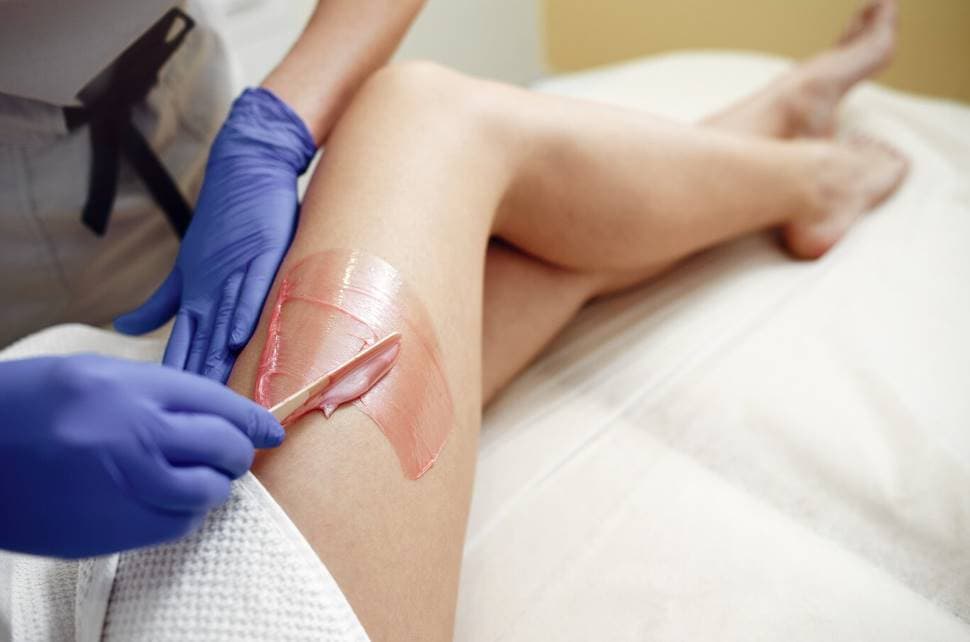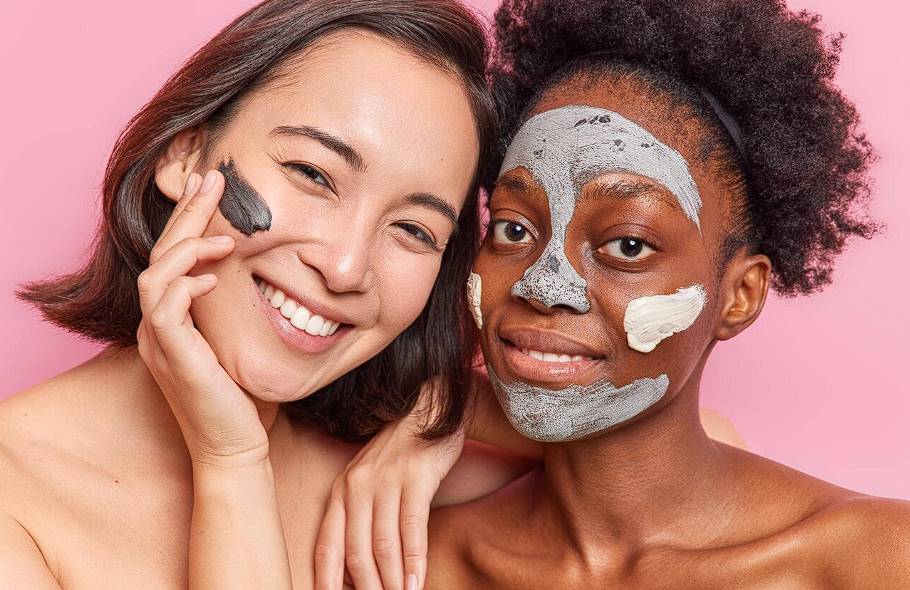Various methods can remove unwanted hair, each with pros and cons. But which one works the best? What's the simplest option? Which one causes less discomfort? The two most common approaches to removing unwanted hair are discussed today: Remove unwanted hair with wax or a laser.
While both treatments are effective, they differ significantly in how they're performed, how painful they are, and what kind of effects they produce. Shaving may be one of the most time-efficient ways to eliminate unwanted hair because it can be done in the shower as part of a regular practice. Waxing and laser hair removal are superior to shaving in terms of how long they last and how much hair they remove. But what's the best way to get rid of unwanted hair?
Waxing
Waxing was the original hair removal method long before sugaring, lasers, and electrolysis. At least among those who have grown up with modern hair removal methods, it is often regarded as an early innovator. Waxing may not be able to prevent hair growth permanently, but it can delay the appearance of unsightly body hair for several weeks longer than shaving.
How Does Waxing Work?

Waxing hair is a straightforward procedure. In only a few seconds, you can have smooth skin all over your body with some heated wax, an applicator, and a fabric strip. In the direction of hair development, apply the wax to the skin using the applicator. Then, a muslin or other cloth strip is put on top and smoothed down toward hair development. At last, you'll remove the muslin strip from your skin by pushing it away from your hair in the opposite direction of growth.
When done correctly, waxing removes hair directly from the follicle. This process leaves the skin silky and free of any discernible hair. However, the dermis, where the follicle is located, is unharmed. After waxing, your skin will be smooth for a few weeks, but new hair will come back eventually unless you wax it again.
Who Can Take It?
Waxing is effective and safe for all hair and skin types, as well as all skin tones. Sensitive patients may have post-procedure skin irritation, redness, and even some follicular bleeding. Waxing, on the other hand, does not cause any long-term damage to the skin. It's safe enough for pregnant women to take.
Benefits Of Waxing
- It works immediately. The effects of each session will be noticeable right away.
- It takes longer for hair to grow back after each waxing session. When it does grow back, it is finer and smoother than before. Some people experience reduced hair as the sessions progress. However, this is by no means universal.
- It's available to nearly everyone except for people with extremely sensitive skin.
- DIY waxing kits are available on the market today. You don't need much specialised knowledge to perform it yourself, but you should be cautious around the hot wax. However, we still advise having a pro take care of it.
- Compared to other procedures of professional hair removal, it is the least expensive. However, the price increases because you require ongoing treatments to combat the regrowth. That could be a drawback in the eyes of some.
Drawbacks Of Waxing
- It hurts so much! Nobody we know has ever had a completely painless experience. Waxing sensitive areas, including the bikini line, upper lip, and underarms, hurts much more.
- Chicken skin and ingrown hairs are common problems. Even while shaving might have the same side effects, plus razor bumps and cuts, waxing is still safer.
- This is a short-term answer. Maintaining flawless, smooth skin requires consistent sessions.
- Before your next appointment, your hair must be at least 1 centimetre long, but ideally much longer. The wax can only hold onto longer hair. Thus, shorter hair will slip through its fingers. You must be patient and accept that some hair will eventually grow out.
- People with sensitive skin may experience some minor discomfort. Some people get rashes, blisters, and sometimes minor bleeding. Facial waxing, which may have even longer-lasting effects, should be avoided. It's possible that eyebrow threading is more your speed.
Laser Hair Removal
Laser hair removal is highly effective if you desire long-lasting results. Although this technique was first used in the 1960s, it has become widely used in the last several decades. Many people now consider this method the best option for permanently reducing hair growth, earning it the "gold standard" in hair removal.
How Is Hair Removal Using A Laser Done?
Laser hair removal, similar to laser skin resurfacing, employs laser light energy to destroy hair follicles by focusing on the pigment in the hair shaft. Although it may sound dangerous, the treatment is harmless and does not harm the skin. It is critical to find a skin clinic that is both reputable and accredited to ensure a risk-free and effective treatment.
The first step is to shave the intended area. The follicles to be eliminated by laser will be easier to locate with this method. While shaving the day before laser skin treatment is recommended, you can always have the technician perform this service for you. When the region is entirely shaved, you can use a topical anaesthetic to dull the sensation of any remaining discomfort. The expert will administer the laser to the affected areas, tailoring the laser's settings to your skin tone and thickness. At the end, a cooling gel will be applied to the area to reduce redness and discomfort. A session can last anywhere from 15 to 30 minutes, with subsequent sessions taking progressively less time.
For full removal, six to twelve laser removal sessions spaced by four to six weeks are required. Your hair's normal growth cycle, and the area you want worked on will determine the time frame. You'll see less hair and slower growth as you continue your treatments. You'll have silky, hair-free skin once you've finished your treatment sessions. The effects can persist for months or even years with only occasional maintenance.
Who Can Get It?
This is where the difficulty of laser hair removal arises. This method of hair removal has varying degrees of success depending on your skin colour. People with black hair and fair complexion are perfect candidates for this method since the laser can easily distinguish between the two colour contrasts. Targeting the wrong melanin pigment is possible if you have dark skin and hair.
The result could be an unintentional bleaching of your skin from a lack of melanin. The good news is that certain skin clinics have invested in high-tech laser equipment that successfully treats clients with dark skin. However, current laser removal equipment is limited in effectively eliminating white or silver hair. Due to the lack of colour in these hairs, targeting the follicles with a laser is impossible.
Benefits Of Laser Hair Removal
The lasting effects of laser therapy are the main advantage of this treatment method.
- Multiple treatments are necessary to ensure permanent hair removal. Those who go this path will see virtually little new hair growth, and those who do will be able to have touch-ups every few years.
- The process takes very little time and causes minimal discomfort. It's much less painful than waxing, even if your pain tolerance is poor.
- It's mild enough for even the most delicate skin types. Get a professional laser specialist to perform it.
- You can use it anywhere, including your face and genitalia.
- The destruction of the hair follicle leads to a drastic reduction in hair growth and the elimination of unpleasant ingrown hairs.
- While the total cost can add up quickly, once all sessions are paid for, no further costs will be incurred. In comparison to frequent waxing, the savings will add up.
Drawbacks To Laser Hair Removal
The results will be slower than with waxing.
Not everyone will enjoy it. Those with white hair or very light hair colour should not do this.
Waxing Vs. Laser Hair Removal
Candidacy
Waxing is effective on all skin types, while laser hair removal is not. In order for the laser to "see" the follicle more clearly, laser hair removal is most effective on those with light complexion and dark hair. Additionally, coarse, thick hair responds better to laser hair removal than fine hair.
Pain
When performed properly, neither waxing nor laser hair removal should cause discomfort. Since waxing sessions are often scheduled once a month, some people get used to the pain associated with the swift removal of hair from the follicle after a few sessions. A numbing medication is occasionally used beforehand to reduce discomfort during laser treatments. A session of laser hair removal is as rapid and painless as a rubber band snapping against the skin. Although you may experience the most discomfort during your initial session, successive treatments require zapping fewer hairs.
Ingrown Hairs
Unfortunately, ingrown hairs tend to multiply after waxing. Waxing can produce unnatural regrowth since the hair is yanked out of the follicle in the opposite direction of its natural development. When a regrown hair cannot emerge from the skin, an ingrown hair forms.
Since the hair follicles are not bent during laser hair removal, the procedure does not result in ingrown hairs.
Damage To The Skin

Redness after waxing is common and normally goes away after a few hours. However, if the wax is excessively hot or peeled off too slowly or at the wrong angle, it can cause long-term harm to the skin. Once conducted by a qualified medical specialist, laser hair removal poses no risk to the skin. Most people with laser hair removal experience a mild burning sensation (like a moderate sunburn) along the treated area immediately after treatment.
Stubble
When hair grows back after waxing, it sometimes looks like stubble and can be itchy when it emerges from the skin. Due to the cyclical nature of hair development, you may have some minimal regrowth between laser treatments or after that. However, the regrowth will look finer and sparser with each successive treatment. Unlike stubble, the individual hairs will be finer.
Speed Of Results
Waxing produces almost instantaneous outcomes. In seconds, your hair will disappear, and the redness will fade. Laser hair removal does not produce rapid results. Permanent hair removal often requires five to seven sessions spaced one month apart. Between treatments, you can shave, but you shouldn't wax. If you wax before your next laser hair removal appointment, the laser won't read as many hair follicles as possible.
Outcome Lifespan
If you wax, your skin will feel smooth for around a month. Waxing once a month is recommended to keep the desired effect. Waxing is also most effective when hair has grown back about a quarter of an inch. This causes an uncomfortable gap between scheduled activities. When comparing laser hair removal to waxing, the results are more long-lasting. Because new hair follicles can grow due to hormonal shifts or maturation, some patients need touch-up appointments every three to six months.
Cost
In the near term, waxing may be less expensive than laser hair removal because a single waxing session costs less than a single laser hair removal session. The waxing results, however, need to be maintained every month, which can add up to a significant sum over a year. Laser hair removal, on the other hand, is more expensive to begin with. However, because most patients only need minor touch-ups, the price of laser hair removal drops considerably. Since laser hair removal is so effective, it can save you money in the long term.
Conclusion
Laser hair removal and waxing are two popular ways to get rid of unwanted hair, and each has its pros and cons. Waxing was the first way to get rid of unwanted hair, and it works well for all hair kinds and skin tones. It works by putting hot wax on the skin and then smoothing it out with a strip of cloth. The skin is not hurt, and new hair will grow back if you don't wax again.
Waxing is safe for all types of hair and skin, but people with sensitive skin may have skin irritation, redness, and follicular bleeding after the process. Almost everyone can get it, except for people with very sensitive skin. There are tools you can use to wax yourself, but you should be careful around hot wax.
Laser hair removal is the "gold standard" for getting rid of hair because it works well and lasts a long time. It focuses on the colour of the hair shaft to kill hair follicles with laser light energy. It is safe and won't hurt your skin. Find a reliable and accredited skin clinic to make sure that your treatment will be safe and effective.
Shaving the area to be treated is the first step. This can be done the day before the treatment. A local anaesthetic is used to dull any pain that might still be there. The laser is used on the damaged areas, and it is adjusted to match the colour and thickness of your skin. A cooling gel is then put on to reduce redness and pain; for a full removal, you need six to twelve sessions, each one four to six weeks apart. With occasional maintenance, the results can last for months or even years.
Laser hair removal is a treatment that works better or worse on different skin colours. It works best on people with black hair and fair skin because the laser can tell the difference between the two colours. But it can't get rid of white or silver hair very well because they don't have colour.
The main benefits of laser hair removal are that it lasts longer than other methods, causes less pain, and can be used anywhere, even on the face and groyne. But it takes longer to work than waxing, and it might not work for everyone, especially if you have white hair or hair that is a light colour.
Waxing works on all kinds of skin, but laser hair removal works best on people with light skin and dark hair. Both ways aren't too painful, but laser hair removal is faster and doesn't hurt. After plucking, ingrown hairs tend to get worse, but laser hair removal doesn't make that happen.
Most waxing redness goes away in a few hours, but too much heat or bad peeling can cause long-term damage to the skin. Laser hair removal gives you benefits right away, but it usually takes five to seven sessions, each one month apart, to get rid of hair for good.
Waxing makes your skin smoother for about a month, but laser hair removal gives you benefits that last longer. Waxing might be cheaper in the short term, but it needs to be done every month, which can add up to over a year.
Content Summary
- Waxing and laser treatments are two prominent methods for hair removal.
- Both treatments have their own advantages and drawbacks.
- Shaving is a quick method but lacks long-term effectiveness.
- Waxing has been a hair removal method since before lasers or electrolysis.
- Waxing delays the appearance of body hair longer than shaving.
- Waxing involves applying heated wax, an applicator, and a fabric strip.
- The wax is applied in the direction of hair growth.
- The hair is removed from the follicle during waxing.
- The skin remains smooth after waxing for several weeks.
- Waxing is suitable for all hair and skin types.
- Some sensitive individuals might experience skin irritation post-waxing.
- Waxing can be done by pregnant women.
- The benefits of waxing include immediate results.
- After waxing, hair regrows slower and finer.
- DIY waxing kits are available in the market.
- Waxing is cost-effective compared to other professional hair removal methods.
- The main drawback of waxing is the pain associated with it.
- Waxing can lead to ingrown hairs and "chicken skin."
- Waxing is a temporary solution that requires consistent sessions.
- Waxing requires hair to be at least 1 centimetre long for best results.
- Facial waxing can lead to longer-lasting skin effects.
- Laser hair removal provides long-term results.
- The laser technique focuses on the pigment in the hair shaft.
- It's essential to choose a reputable skin clinic for laser treatment.
- The treated area must be shaved prior to laser hair removal.
- Laser treatment sessions last 15-30 minutes.
- Six to twelve laser sessions are typically required for complete hair removal.
- After finishing laser sessions, the results can last months or years.
- Laser hair removal is most effective for those with light skin and dark hair.
- Modern lasers can treat clients with darker skin.
- Current laser devices struggle with white or silver hair removal.
- The benefits of laser hair removal include long-lasting effects.
- Laser treatment causes less pain than waxing.
- Laser treatment can be used on any part of the body.
- It reduces hair growth significantly and prevents ingrown hairs.
- While initial laser sessions can be costly, they result in long-term savings.
- Laser hair removal might not show immediate results like waxing.
- Those with white or light hair are not suitable candidates for laser hair removal.
- Waxing is universally effective, while laser has restrictions based on skin and hair type.
- Properly performed waxing and laser treatments should minimise pain.
- Waxing can cause ingrown hairs due to unnatural hair regrowth.
- Laser treatment does not lead to ingrown hairs.
- Overheated wax or incorrect technique can cause skin damage.
- Redness post-waxing is common but usually temporary.
- Performed by a professional, laser hair removal is safe for the skin.
- Laser treatment may result in a mild sunburn-like sensation.
- Post-waxing hair regrowth can appear as stubble.
- Hair growth between laser sessions is minimal due to the treatment's cyclical approach.
- Waxing and laser both serve as effective hair removal options.
- The choice between waxing and laser depends on individual needs and preferences.
Frequently Asked Questions
The laser is a better choice in the choice between laser and waxing as it's not only a long-term solution to the problem of unwanted body hair but is also much less painful than waxing. Laser hair removal also eliminates the problem of ingrown hairs, as it destroys the hair follicle.
Laser hair removal is considered the longer-term hair removal method. This procedure targets the hair follicle. It destroys the follicle with high-heat lasers to prevent new hair growth. Laser hair removal, such as electrolysis, takes repeated sessions to achieve the best results.
Rarely, laser hair removal can cause blistering, crusting, scarring or other changes in skin texture. Other rare side effects include greying of treated hair or excessive hair growth around treated areas, particularly on darker skin.
Laser technology is incredibly precise, making laser hair removal ideal for people looking to target and remove a few specific hairs. This makes it a great option, even if you want to remove small areas of hair from around the eyebrows, upper lip, nose, bikini line, or hairline.
The lasers penetrate the skin and do not affect the rest of the body. Even in sensitive places like the genitals, laser hair removal is usually safe.




















